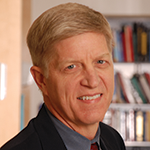
Tashatuvango / shutterstock.com
Daniel Solomon, MD, MPH, has practiced rheumatology for more than 20 years, all while conducting translational and clinical research and teaching young clinicians. Soon, he will also step into the role of editor in chief of Arthritis & Rheumatology, as Richard J. Bucala, MD, PhD, ends his tenure. He will assume some duties during a transition period starting April 1, 2020, and serve his term from July 1, 2020, to June 30, 2025.
Arthritis & Rheumatology (A&R) is one of three journals published by the ACR and is focused on high-quality basic, translational and clinical research in rheumatology. The ACR also publishes the open-access journal ACR Open Rheumatology and, with the ARP, Arthritis Care & Research.
Dr. Solomon has an impressive list of accomplishments. He has published more than 400 articles, chairs the U.S. Food & Drug Administration’s Arthritis Advisory Committee, led the ACR Blue Ribbon Panel that set recommendations for non-steroidal anti-inflammatory drugs (NSAIDs) and conducted numerous large-scale trials to improve osteoporosis care.
He is a physician at Brigham and Women’s Hospital, Boston, where he serves as chief of the section of clinical sciences in the Division of Rheumatology and is on the faculty at Harvard Medical School. His research is focused on drug effectiveness and safety, osteoporosis care and the cardiovascular implications of rheumatoid arthritis and related treatment. He is fluent in medical Spanish, which comes in handy serving the large Hispanic population in the Boston area.
Get to know Dr. Solomon in the following Q&A:
The Rheumatologist (TR): Tell us about yourself as a clinician. How did you become a rheumatologist?
Dr. Solomon: I have always been interested in chronic care, not specialties [in which] you see a patient once or twice, but in longitudinal relationships with patients. And, like many rheumatologists, I’m interested in the mysteries of the immune system and the evolving therapeutic armamentarium. The diseases attracted me to rheumatology as a resident, and the rest is history.
Being in an academic medical center suits me well; as someone who spends a lot of time performing research, teaching and publishing, [I find] the hospital setting is ideal.
I have been involved in a number of quality improvement projects in the clinic. Most recently, we engaged in using tablet computers in the waiting room to enhance patient reporting of outcomes while waiting to see the rheumatologist. Other quality improvement work has involved better implementation of treat-to-target [strategies] for rheumatoid arthritis (RA) as well as improving collaborative care for common co-morbidities in rheumatic disease patients, such as osteoporosis and cardiovascular disease.
TR: Can you talk a bit more about your research? What do you focus on?
Dr. Solomon: I focus on the effectiveness of rheumatology treatments. I spent the first decade of my research career focused on drug safety epidemiology (pharmacoepidemiology), conducting early studies on the cardiovascular safety of NSAIDs, coxibs [COX-2 inhibitors] and opioids. We also examined infection and cancer risks associated with biologic disease-modifying anti-rheumatic drugs. My current work involves conducting and analyzing large trials examining the safety of methotrexate and the cardiovascular impact of tumor necrosis factor antagonists.
Another area that I have a growing interest in is the use of digital health technology in rheumatology. This area will grow in importance, and it is up to rheumatologists to lead the way.
TR: What drew you to the role of A&R editor in chief?
Dr. Solomon: I’ve been involved in ACR journals for the better part of 15 years. I was originally an associate editor of Arthritis Care & Research and then an associate editor of Arthritis & Rheumatology. In the past five years, I have served as Rick Bucala’s deputy editor at A&R, which provided an education in medical publishing and editing.
As a researcher and someone who spends a lot of time writing, researching and critiquing the literature, shaping the rheumatology literature as part of the editorial board of ACR journals felt like an important role. I can help people understand the importance of research and the clinical relevance of accurate and clear reporting of research. I greatly enjoy good writing and have learned to help trainees and other authors improve the clarity of their prose.
TR: Why do you think research is important in rheumatology?
Dr. Solomon: Research is an essential part of healthcare. The practice of medicine must continually evolve through research and education. Research is the backbone of medicine and rheumatology. By studying the best ways to diagnose, treat and manage patients, we can give patients the best care possible. I would also conjecture that the more academic and research focused clinicians are, the more systematic they are in their thinking about how to care for patients: They question their assumptions, look for better answers and, therefore, give more thoughtful care to patients. Once you get curious about how to best care for patients, the next step is to figure out the best way to treat and diagnose. Curiosity and the desire to better care for patients are what drive my research engine.
TR: What are your goals for A&R? What opportunities do you see? Are there challenges?
Dr. Solomon: There are several things I hope to do in my term as editor in chief. One is to be able to better serve the authors and readership by continuing to improve accessibility to the best rheumatology literature. This is accomplished through a number of channels, with social media assuming an ever-growing role.
Social media increasingly helps let the broader community know about important new findings. We want to amplify the message about relevant and valid research being published in A&R, as well as across all of [the] ACR’s journals. Podcasts are something we’re considering, as well as an improved website experience.
‘I can help people understand the importance of research & the clinical relevance of accurate & clear reporting of research.’ —Dr. Solomon
It would be ideal if the ACR journal websites could be a distribution point for rheumatologists looking for information, not just an article, but information about rheumatology and rheumatologic disease. Our websites can serve as more than just a repository of articles by becoming interactive, with easier-to-access information, using enhanced graphics and making the information more accessible for a greater audience.
Another important direction that we have discussed with the ACR’s Committee on Journal Publications is developing a new type of article that would provide expert guidance on relevant clinical topics. Right now, there are a lot of guidelines, and they can sometimes be difficult for the clinician to decipher. Our clinical readership is looking for easier to understand and digest expert opinions on how to diagnose and treat common patients in a rheumatology practice. Guidelines are rigorously prepared using top methods, but the products are sometimes difficult to apply in practice. This new type of article would be a collaboration with the ACR, determining the best topics and authors for giving guidance.
Another focus will be improving the author experience, especially the timeliness of review decisions. The current review times are relatively short, but I have ideas to improve this further.
TR: A&R has a new competitor in The Lancet Rheumatology. What might that mean for the journal?
Dr. Solomon: The rheumatology community welcomes another high-quality journal for people to publish in. The Lancet Rheumatology has the potential to be a competitor for certain articles we’d like to have published in A&R, but our impact factor has increased from seven to above nine, and I anticipate we will continue to be very selective in which articles are published in A&R. There’s no lack of good material, so I’m not overly concerned that there’s another good place to publish. I think that A&R has a reputation that The Lancet Rheumatology doesn’t have yet. Over time, it will hopefully develop a strong track record and become another excellent place to publish.
TR: How does A&R fit within the ACR’s family of publications, including AC&R, ACR Open Rheumatology (ACROR) and The Rheumatologist?
Dr. Solomon: A&R is the journal with the longest track record and the one with the highest impact factor. It has always been considered the gold standard journal for U.S. rheumatologists to publish in. But the others are incredibly important journals; they serve slightly different, complementary roles. ACROR is growing in stature and submissions. Of course, The Rheumatologist has a great reputation as well.
A&R has a broad scope of basic, translational and clinical science. It includes all the rheumatologic diseases, from common diseases, such as rheumatoid arthritis, to less common diseases, such as scleroderma. And it represents the global rheumatology research community, publishing articles from around the world. Most articles have hundreds, if not thousands, of downloads from people on every continent.
TR: You also teach, so how do you balance everything?
Dr. Solomon: I’ve had a lot of teaching roles at Harvard Medical School (HMS) and at Brigham. I used to run the musculoskeletal pathophysiology course for HMS, but I actually gave that up in anticipation of this role. I teach epidemiology classes and a variety of clinical science classes on drug safety at HMS and the Harvard School of Public Health. I teach residents on clinical topics in rheumatology and usually give several lectures each year on rheumatoid arthritis, gout and osteoporosis. I typically have between two and five trainees doing research with me, so much of my teaching is mentoring—helping people learn how to be successful researchers, from developing ideas for studies to executing studies.
I also co-direct a course in the Division of Rheumatology for clinical research, the VERITY/BWH Clinical Research Course; this spring will be the second year of the course. It is funded as part of an NIH [National Institutes of Health] grant that focuses on providing training and infrastructure support to clinical researchers in rheumatology. The course attracts trainees from around the country. They come for a week, and it’s like a boot camp for clinical research in rheumatology. In our first class, we had 15 students/trainees: some adult and some pediatric rheumatologists, as well as one medical resident.
Balancing teaching, researching and editing is a challenge. Being editor is a substantial time commitment. Because I’ve been deputy editor for the last four-plus years, I understand what the workload is and how to balance that with my administrative, teaching, research and patient activities. I will probably do less research of my own to fit in with the enhanced role of editor, but it’s something that’s required.
TR: How did you come to learn medical Spanish?
Dr. Solomon: I took Spanish in high school, and then in medical school I took medical Spanish. As a medical student, I traveled in Guatemala, and as a resident, I traveled in Honduras. In Honduras, I worked in the major teaching hospital in the capital city of Tegucigalpa, where no one spoke English. My Spanish improved quickly out of necessity. Now, I have a practice with about 50% Spanish-speaking patients.
TR: When you’re not practicing rheumatology, teaching, doing research or editing journal articles, how do you like to spend your time?
Dr. Solomon: I am the father of three teenage daughters, who keep me and my wife busy. My avocations are racket sports—I play tennis and platform tennis. And I bike a lot, so I stay active and fit doing those activities. We also travel a lot as a family.
Kelly April Tyrrell writes about health, science and health policy. She lives in Madison, Wis.



